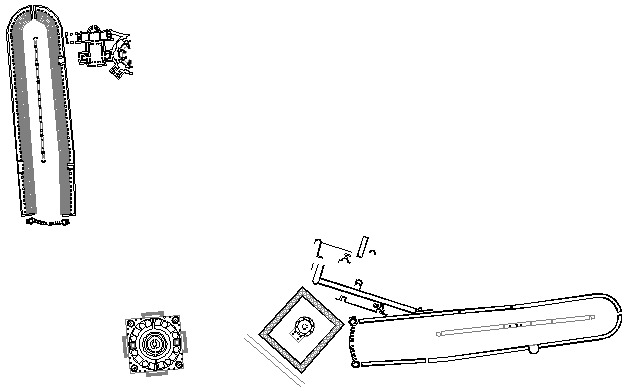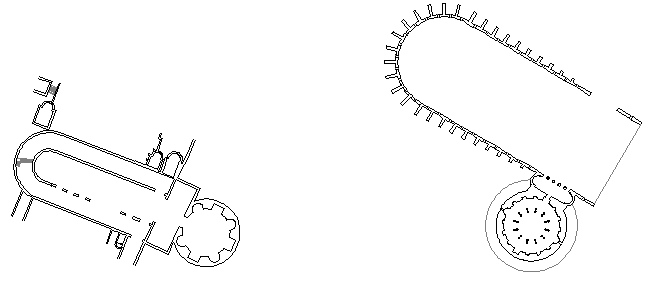0040 Circus of Gaius and Nero 8202
0135 Circus of Hadrian 8203
0135 Mausoleum of Hadrian 8204
0199 De Spectaculis 8205
0221 palatium Sessorianum 8206
0222 Circus Varianus 8207
0300 Palace of Diocletian 8209
0300 Porta Nigra 8212
0302 Baths of Diocletian 8215
0307 Temple of Venus and Rom 8218
0308 Basilica of Maxentius/Constantine 8221
0309 Mausoleum of Romulus/Villa of Maxentius 8224
0309 Circus of Maxentius 8227
0310 Basilika Palastaula 8230
0310 Baths of Constantine 8233
0312 Basilica Constantiniana 8236
0313 Arch of Janus Quadrifrons 8239
0313 Thermae Helenae 8242
0314 Basilica Santa Agnese 8245
0314 Basilica Santes Marcellino et Pietro
Mausoleum of Constantine 8248
0314 Basilica of St. Lawrence 8251
0314 Basilica of St. Sebastian 8254
0315 Arch of Constantine 8257
0315 Baths of Constantine 8260
0319 San Pietro in Vaticano 8263
0325 Church of the Holy Sepulchre 8266
0325 Church of the Nativity 8269
0325 Church on the Mount of Olive 8272
0326 Santa Croce in Gerusalemme 8275
0327 Trier Cathedral 8278
0327 Basilica at Mamre 8281
0330 Constantinople 8284
0349 Mausoleum of Constantina 8287
0363 Temple of Jerusalem 8290
0364 Scala Santa 8292
0380 Basilica of St. Paul 8294
0390 Cathedral of Ravenna 8296
0425 churches of Galla Placidia Augusta 8298
| |
2001.08.14
The second edition of QUAESTIO ABSTRUSA is subtitled "The Paradigm Shifting Architectures of Closely Related Imperials" and focuses on the architectures manifested throughout the Roman Empire from the reign of Diocletian through to the reign of Julian. This period from 284 AD to 363 AD encompasses the Constantinian dynasty of rulers, which began with Constantius I, the western Caesar of Diocletian's tetrarchy and the father of Constantine I (the Great), and ended with Julian (the Apostate), who was one of Constantius I's grandsons, the son of one of Constantine I's half brothers, and the husband of Constantine I's youngest daughter. The name of Constantine I's youngest daughter was Helena, and the name of Constantius I's youngest daughter was Eutropia, and both of these imperial daughters were named for their respective grandmothers, who were essentially the matriarchs of the Constantinian dynasty of both rulers and builders.
The elder Eutropia was the wife of Maximian, the western Augustus who co-ruled the Empire with Diocletian. Eutropia had three children, the eldest, Theodora, was from a previous marriage, while Maxentius and Fausta were fathered by Maximian. Theodora became the second wife of Constantius I, Maxentius became the usurpative Augustus of Italy and North Africa, and Fausta became the second wife of Constantine I. Interestingly, Eutropia's blood line is the most consistent throughout the Constantinian dynasty since she is Julian (the Apostate's) oldest direct imperial relation.
The elder Helena was the first wife of Constantius I, and the mother of Constantine I. Helena, who was not of aristocratic birth, was divorced from Constantius I when he was raised to the rank of western Caesar and in the process married the imperial daughter Theodora. In time, however, Helena herself was raised to the rank of Augusta during the reign of her son Constantine I. Ultimately, Helana was further raised to the rank of Christian saint.
Despite intricate familial relations--Eutropia became the mother-in-law to both Constantius I and Constantine I (father and son), and Eutropia's daughter Theodora is the main reason for Helena's divorce--and bloody inter-familial power struggles--Eutropia's husband and son, Maximian and Maxentius respectively, both died due to the rise in power of Helena's son, Constantine I--both women lived to be octogenarians within the imperial household, and indeed appear to have bonded in their mutual devotion to the task of establishing a new imperial Christian architecture. Imperially sanctioned Christian building began in Rome under the rule of Constantine I as early as November 312, and in the Vita Constantini, the Life of Constantine written by the bishop Eusebius during the end of Constantine I's lifetime, we learn that both Helena and Eutropia were actively tending to holy sites in Palestine in the mid-320s. Helena is credited with building the first Christian basilicas at the sites of Christ's Nativity and Ascension, while Eutropia is responsible for the restoration of the holy site at Mamre (today's Hebron), where an angel of God first appeared to Abraham. Thus, in turn, it is the architectural activity of Helena and Eutropia that positions the very center of the "paradigm shifting architectures of closely related imperials."
The architectures of the Roman Empire executed from the reign of Diocletian through to the reign of Julian come to represent the extraordinary transition of a Pagan architecture into a Christian architecture. That this enormous transformation occurred within the rule of one family only further compounds the large scale historicity of the event. Both the Constantinian dynasty and the architecture it produced present a gigantic puzzle with many diverse pieces, some of which fit nicely together, some of which fit strangely together, and some of which are missing entirely. The last piece of the puzzle is also no doubt the most ironic. Julian (the Apostate), who reigned as emperor from 361 to 363, renounced his Christianity and briefly revived imperial Paganism. Moreover, Julian is the last ruler in history to attempt a rebuilding of the Temple of Solomon in Jerusalem.
| |
2013.10.28 18:59
28 October
28 October 306: the Senate and the Praetorian Guard in Rome proclaim Maxentius as emperor princeps.
It could easily be said that the architecture of Rome (the city) under Maxentius represents the last flourish of genuine Classical in its true pagan milieu.

left: The Circus of Hadrian and the Mausoleum of Hadrian (135 AD), after Piranesi.
right: The Circus of Maxentius and the Mausoleum of Romulus (son of Maxentius) (c. 310 AD), on the Appian Way.
Both complexes, displayed here at the same scale with true north up, comprise the 'classic' Roman funereal paradigm of tomb, circus and dining hall, facilitating the "munus", a death rite, where death games and feasts accompanied the funeral day.
28 October 312: Maxentius offers battle with Constantine outside the gates of Rome near the Milvian Bridge. Maxentius suffers total defeat, himself drowning in the Tiber.
It is at this point that the architecture of Rome (the city) begins to represent a pagan/Christian hybrid, with stylistic influence coming from the North (Treves Augustum [today's Trier, Germany]), Constantine's Imperial capital, and from the East (Nicomedia [today's Izmet, Turkey]), the Roman Empire's power center since c. 280 AD.

left: The Circus of Maxentius and the Mausoleum of Romulus (son of Maxentius) (c. 310 AD), on the Appian Way.
center: The 'basilica' of Sts. Peter and Marcellinus (c. 314 AD) and the Mausoleum of Helena (mother of Constantine) (326 AD).
right: The 'basilica' of St. Agnes (c. 314 AD) and the Mausoleum of Constantina (daughter of Constantine) (c. 345 AD).
The three complexes, displayed here at the same scale with true north up, demonstrate how the tombs remained more or less the same, i.e., substantial round, domed structures, but the pagan funereal circus has morphed into a circus-shaped covered graveyard where feasts were held on the respective saint's death ('feast') day.

It is on record that the yearly commemorative feasts of saintly death days quickly evolved into quite exorbitant, if not all out drunken, several-day-long affairs, thus, by the beginning of the fifth century, Rome's somewhat unique circus-shaped basilica/graveyards were deemed inappropriate for 'church' architecture, closely coinciding with (St.) Augustine's writing of The City of God Against the Pagans.
|